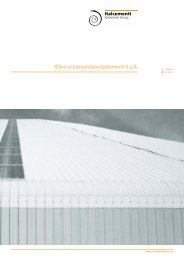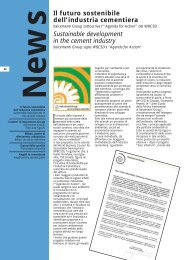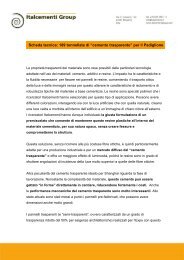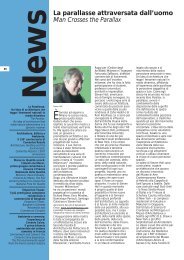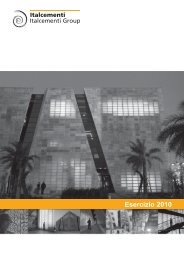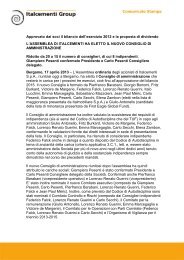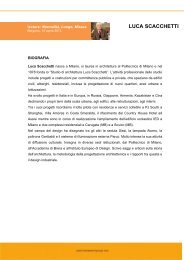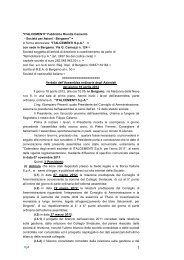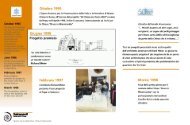2011 Annual Report - Italcementi Group
2011 Annual Report - Italcementi Group
2011 Annual Report - Italcementi Group
Create successful ePaper yourself
Turn your PDF publications into a flip-book with our unique Google optimized e-Paper software.
<strong>2011</strong> <strong>Annual</strong> <strong>Report</strong><br />
Presentation 4<br />
General information 15<br />
<strong>Annual</strong> <strong>Report</strong> Consolidated <strong>Annual</strong> <strong>Report</strong> Directors’ report 150<br />
Extraordinary session <strong>Italcementi</strong> S.p.A. <strong>Annual</strong> <strong>Report</strong> Separate financial statements 239<br />
of the equity investment. The original cost is restored in subsequent periods if the grounds for the adjustments<br />
no longer exist. Adjustments and any restatements of value are charged to the income statement.<br />
Joint ventures<br />
Joint ventures are companies whose business operations are controlled by the company jointly with one or<br />
more other parties, under contractual arrangements. Joint control presupposes that strategic, financial and<br />
management decisions are taken with the unanimous consent of the parties that control the venture.<br />
Interests in joint ventures are measured on a cost basis and, as with investments in subsidiaries and<br />
associates, this amount is subjected to periodic impairment testing.<br />
They are included in investments in subsidiaries or associates as from the date on which joint control is<br />
assumed and until such control is relinquished.<br />
1.5. Business combinations<br />
On first-time adoption of the IFRS, as allowed by IFRS 1, the company elected not to apply IFRS 3<br />
retrospectively to business combinations that took place before January 1, 2004.<br />
Until December 31, 2009, business combinations were accounted for with the purchase method in IFRS 3.<br />
Since January 1, 2010, business combinations have been accounted for with the acquisition method in IFRS3<br />
revised.<br />
Cost of business combinations<br />
Under IFRS 3 revised, acquisition cost is the sum of the acquisition-date fair value of the contingent<br />
consideration and the amount of any non-controlling interests in the acquired entity. For each business<br />
combination, any non-controlling interests in the acquired entity must be measured at fair value or in proportion<br />
to their interest in the identifiable net assets of the acquired entity.<br />
IFRS 3 revised provides that costs relating to the acquisition be expensed in the periods in which they are<br />
incurred and the services are received. Any costs incurred in 2009 relating to business combinations in 2010<br />
were expensed in 2009.<br />
Allocation of the cost of business combinations<br />
Goodwill is measured as the positive difference between:<br />
- the aggregate of the consideration transferred, the amount of any non-controlling interests in the acquired<br />
entity, the acquisition-date fair value of the acquirer’s previously held equity interest in the acquired entity,<br />
with respect to<br />
- the net amount at the acquisition date of identifiable assets acquired and liabilities assumed.<br />
If the difference is negative, it is recognized in the income statement.<br />
If on initial recognition the acquisition cost of a business combination can only be determined provisionally, the<br />
allocated amounts are adjusted within twelve months of the acquisition date (measurement period).<br />
1.6. Translation of foreign currency items<br />
Foreign currency transactions<br />
Foreign currency transactions are initially translated to the functional currency using the exchange rate at the<br />
transaction date. At the reporting date, foreign currency monetary assets and liabilities are translated to the<br />
functional currency at the closing rate. Exchange rate gains and losses are taken to the income statement.<br />
Non-monetary foreign currency assets and liabilities measured at cost are translated at the exchange rate<br />
ruling at the transaction date; those measured at fair value are translated with the exchange rate at the date<br />
fair value was determined.<br />
249<br />
www.italcementigroup.com




